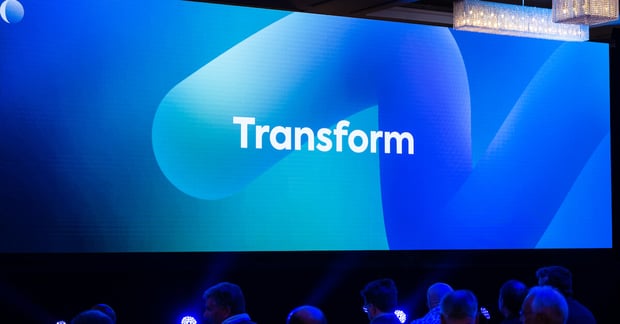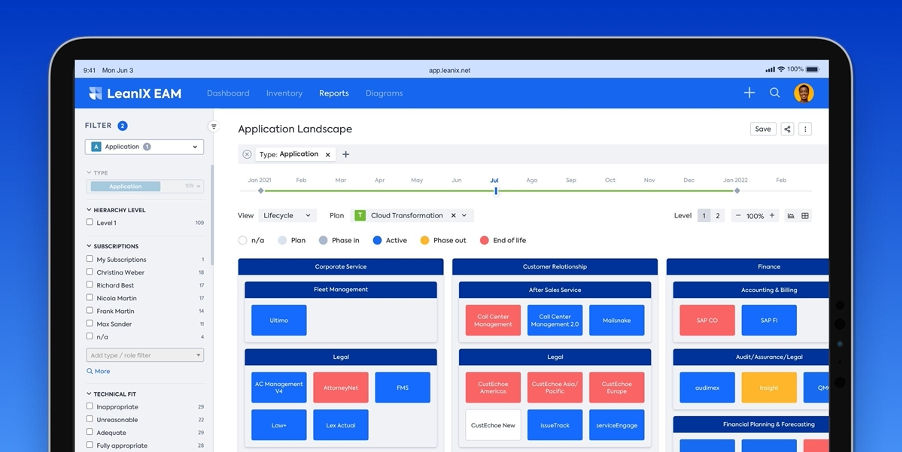
CIO success is increasingly based on optimizing the business by enabling change. Find out how enterprise architecture can be your secret sauce for ongoing business transformation.
Enterprise architecture has come a long way. Once a discipline focused on the design and governance of IT landscapes, many now view it as the key to business transformation and digital innovation in enterprise.
Increasingly, CIOs are taking notice of this. The steadily accelerating pace of technological change has put increased pressure on IT leaders to help their organizations, not only keep up, but also turn technology into a competitive advantage.
Enterprise architects are perfectly positioned to help CIOs meet these challenges. Let's look more closely at how CIOs can leverage the methods and insights of enterprise architects to enable change and drive growth through agility.
What Is Enterprise Architecture?
Enterprise architecture is a methodology for mapping and aligning your organization's technology, data, operations, and people to best support your strategic goals. This makes enterprise architects important allies and advisors to the CIO.
"Enterprise architects provide the essential elements of any meaningful business transformation initiative"
When your enterprise architects have the right tools, they can provide a complete overview of your IT landscape. What's more, they can also define and design your target IT state, as well as the roadmap to get there.
In other words, enterprise architects provide the essential elements of any meaningful business transformation initiative. They, not only provide the data and insight to ensure you're making the right decisions, but also provide the dashboards and overviews you need to report back to the board on your goals and progress.
As a result, you can:
- report on the current state of your infrastructure
- present your vision for the future state along with its benefits
- develop a transformation roadmap and track progress
- highlight the business impact of specific IT decisions
- store historical data on past transformations
The key to all this is high-quality data, along with the ability to present that information in the most useful, actionable way.
Getting Everyone On The Same Page
Communication is the foundation of any successful business transformation. For chief information officers (CIO) to win buy-in from stakeholders, you need to explain why transformation is necessary, what steps will be involved, and what the roadmap is for the future.
Enterprise architects understand your IT landscape and can back up the need for transformation with solid intelligence on performance and current limitations. They're also best placed to help you create a realistic target architecture and a feasible roadmap to achieve it.
While 'blue sky' thinking and headlines about new technologies may suggest an idealized vision of a modern IT landscape, the reality is often far more challenging. From deeply ingrained legacy systems that will take time to remove, to innovative technologies that may not be all they seem, enterprise architects will understand the feasibility of your proposed transformation.
Since 70% of digital transformations fail, having a realistic understanding of what you're trying to achieve is vital. This is the only way that you can manage the expectations of your stakeholders.
Say, for example, your finance team wants to continue to use a legacy system that's no longer supported, but your marketing team wants an expensive ChatGPT AI integration that will leave you vulnerable to cyber attack. Understanding your enterprise architecture will allow you to create a compromise state that all your stakeholders can buy into when they understand that it's the best path.
Enterprise Architecture Arms CIOs With Reliable Data

Enterprise architecture offers CIOs the hard data they need to validate their business transformation with stakeholders, but how do you make that data tell an effective story? In the modern day, there has to be an easier way to show your work than emailing a spreadsheet.
That way is LeanIX EAM. Our platform will aggregate and store all the information you need about your IT landscape, allowing you to easily visualize and analyze that data.
You can even create customized dashboards for each of your major stakeholders, sharing the important information they need at the level of detail they want. That's why our pricing model isn't based on number of users, so everyone in your organization can view key information.
This kind of democratic access to data is also important because it allows business users, and not just the C-suite, to make sound decisions about the technology they depend on.
Once you've shared your as-is state with your stakeholders and highlighted the need for transformation, you can then share your target state with them to gain approval and buy-in. This ensures everyone is aware of your plans and has signed off on the new state of your IT landscape before you begin to realize it.
You can then start to build out your roadmap and timeline for moving from your current state to the agreed upon target. This can, once again, be shared with and approved by all your stakeholders.
Why Does Buy-In Matter For CIOs?
Using an enterprise architecture tool like LeanIX EAM allows CIOs to gain buy-in from stakeholders. Why, however, is buy-in so important?
Firstly, any transformation worthy of the name will affect the entire organization. This means that everyone needs to know how the transformation will impact them and that all relevant voices should be heard in the planning. If you don't acquire buy-in from your stakeholders, they won't help, either in the planning or as the initiative proceeds.
On that point, transformation also involves a well-orchestrated series of actions. Getting buy-in up-front means that people will be prepared when it comes time to do their part. It also means that, when the new state has been achieved, they will take advantage of it.
Finally, when everyone understands where you are headed and why, it can mean they are more understanding when inevitable complications arise. Getting agreement on the final destination lays the foundation for co-operation and collaboration when course correction is called for.
Perception, as they say, is reality. Since buy-in influences the perception of both the process and the outcome, you could say that buy-in is the very measure of success.
Given the role that enterprise architects and a solid enterprise architecture practice play in creating that buy in, it's no wonder that CIOs have come to embrace it as mission-critical.
Enterprise Architecture Is The Secret To CIO Success
Enterprise architecture is a vital capability to support CIOs striving to achieve their strategic goals. The best way to support enterprise architects and collaborate with them on business transformation is to use LeanIX EAM as a single source of truth regarding your IT estate.
To find out more about how LeanIX EAM can support CIOs in achieving business transformation success, book a demo:

.png?width=140&height=107&name=BTMPlaybook-FI%20(1).png)

